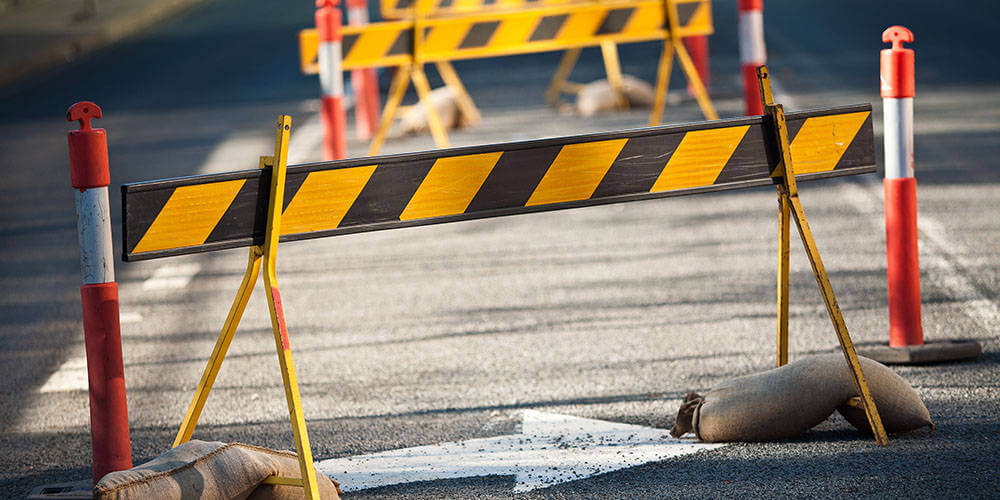When disaster strikes—whether natural or man-made—swift and effective emergency response is crucial to saving lives and limiting damage.
Among the many tools used by first responders, roadblock equipment play a vital but often overlooked role. These supplies help control traffic, secure dangerous zones, guide evacuees, and protect both emergency personnel and the public.
This article explores the critical functions of roadblock supplies in emergency response and disaster management, backed by real-world examples and expert insights. It also offers detailed best practices for agencies and organizations to optimize the use of these tools during crises.
What Are RoadBlock Supplies in Emergency Contexts?
Roadblock supplies include a variety of physical tools and equipment—such as traffic cones, barriers, portable signage, flashing lights, and other devices—used to restrict or direct vehicle and pedestrian movement temporarily. In emergencies, their purpose extends beyond routine traffic control; they help establish safe perimeters, reroute traffic, facilitate evacuations, and maintain order in rapidly changing situations.
Because emergencies demand fast, flexible, and clear communication, the proper deployment of roadblock supplies can be a deciding factor in effective disaster response.
Key Functions of RoadBlock Supplies in Disaster Management
Roadblock supplies serve multiple essential roles during emergencies. Here are eight key functions they fulfil:
1. Securing Hazard Zones
Barriers and cones prevent unauthorized access to dangerous areas—collapsed structures, chemical spills, fire zones, or unstable terrain—protecting both responders and the public.
2. Managing Traffic Flow
Disasters disrupt normal traffic patterns. Roadblocks help safely reroute vehicles, reduce congestion, and maintain order on alternate routes.
3. Facilitating Evacuations
Clear, visible signage and barriers guide evacuees along designated safe routes, reducing confusion and panic during mass movements.
4. Creating Emergency Vehicle Lanes
Designated lanes ensure ambulances, fire trucks, and police can move quickly without obstruction from civilian vehicles.
5. Protecting Emergency Personnel
Roadblock perimeters shield responders working roadside or at incident scenes from fast-moving traffic hazards.
6. Supporting Search and Rescue Operations
Controlled access points allow rescuers to operate efficiently without interference or unauthorized entry.
7. Controlling Crowd Movement
In large-scale disasters or public gatherings, barriers help manage pedestrian flow and prevent overcrowding near critical sites.
8. Signaling Hazardous Conditions
Flashing lights, reflective signs, and barriers alert drivers and pedestrians to road closures, debris, flooding, or other hazards.
Best Practices for Using RoadBlock Supplies in Emergencies
Deploying roadblock supplies effectively during emergencies requires careful planning, training, and coordination. Here are sixteen best practices to maximize safety and operational efficiency:
1. Maintain an Emergency Stockpile
Keep a dedicated inventory of roadblock supplies ready for immediate deployment. Regularly inspect and replenish the stockpile to avoid shortages.
2. Develop a Rapid Deployment Plan
Establish clear protocols defining who is responsible for deploying supplies, where, and how—tailored for different emergency scenarios.
3. Train All Relevant Personnel
Conduct regular training sessions for emergency responders, traffic controllers, and volunteers on proper setup, safety standards, and troubleshooting.
4. Use Highly Visible and Durable Equipment
Select cones, barriers, and signs with high reflectivity and weather resistance to ensure visibility and durability under all conditions.
5. Incorporate Solar-Powered Lighting
Utilize solar-powered flashing lights and beacons to maintain illumination without relying on external power sources or frequent battery changes.
6. Coordinate with Local Authorities
Work closely with police, fire departments, medical teams, and municipal authorities to align roadblock setups with overall response strategies.
7. Plan for Multiple Scenarios
Prepare flexible layouts and supply combinations capable of handling small incidents up to large-scale disasters.
8. Establish Clear Communication Channels
Use radios, mobile apps, or other tools to maintain real-time communication among teams during deployment and adjustments.
9. Ensure Accessibility for Emergency Vehicles
Design setups with removable or quickly movable sections to allow unimpeded passage for emergency responders.
10. Monitor and Inspect Roadblocks Frequently
Assign personnel to conduct regular checks, especially after heavy traffic, adverse weather, or prolonged deployments, to maintain effectiveness.
Expert Insight
Captain Lerato Mokoena of Johannesburg Emergency Services emphasizes:
“Effective use of roadblock supplies during disasters is non-negotiable. It’s essential not just for safety but for operational efficiency. Investing in reliable, easy-to-deploy equipment pays dividends when every second counts.”
Innovations Enhancing Emergency Roadblock Effectiveness
Modern innovations enhance the speed, safety, and sustainability of emergency roadblock deployments:
- Lightweight Modular Barriers: Easy to transport and assemble, reducing setup time.
- Solar-Powered Flashing Lights: Offer reliable illumination without external power needs.
- Smart Signage and IoT Integration: Allow remote monitoring and real-time adjustment of roadblock configurations.
- Durable Materials: Advanced composites and powder-coated steel extend equipment lifespan, reducing waste and replacement frequency.
Key Takeaway
- Roadblock supplies are essential in emergency response and disaster management for securing hazards, managing traffic, aiding evacuations, and protecting responders.
- Preparedness through stockpiles, training, and coordination enhances deployment effectiveness.
- Leveraging modern technology and innovative materials further improves safety and efficiency during crises.
- Public education and continuous improvement ensure communities and responders stay safe.
FAQs
How quickly can roadblock supplies be deployed in emergencies?
With trained personnel and ready stock, roadblocks can be set up within minutes to secure hazards and reroute traffic.
Are standard roadblock supplies suitable for all disaster types?
Most supplies are versatile, but some situations may require specialized equipment, such as chemical-resistant barriers or reinforced barricades.
How can agencies coordinate roadblock deployment effectively?
Regular joint training exercises and clear communication protocols improve coordination among emergency services.
Can technology improve roadblock management during disasters?
Yes. IoT-enabled signs and remote-controlled barriers offer real-time adaptability and monitoring.
Should communities be educated about roadblocks in emergencies?
Absolutely. Public awareness reduces confusion and improves compliance during crises.
Preparedness is key. Roadblock supplies play a quiet but crucial role in keeping communities safe during emergencies. Ready access to the right equipment and skilled deployment make all the difference when disaster strikes.




